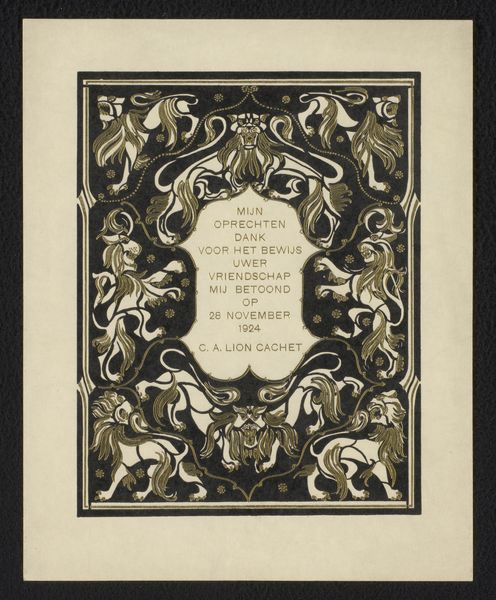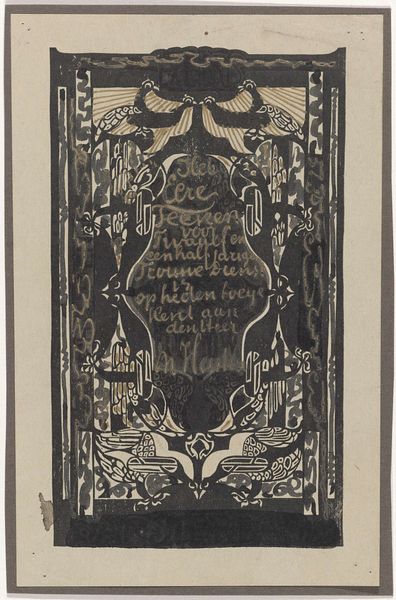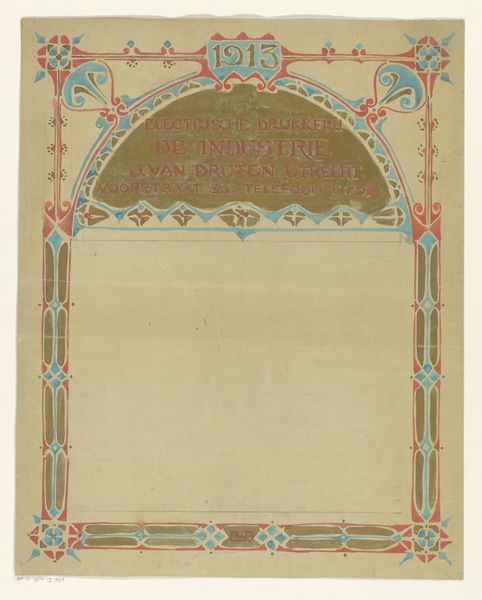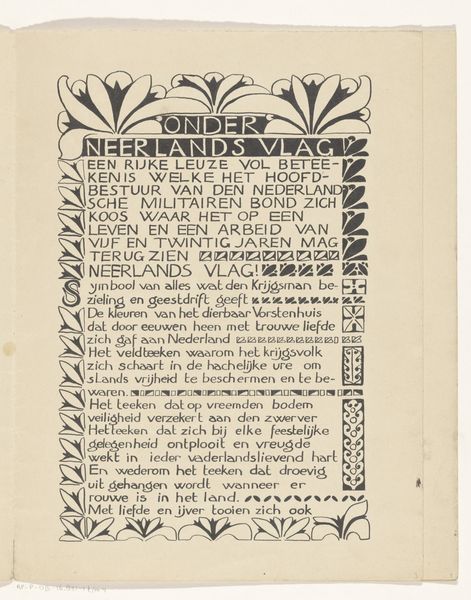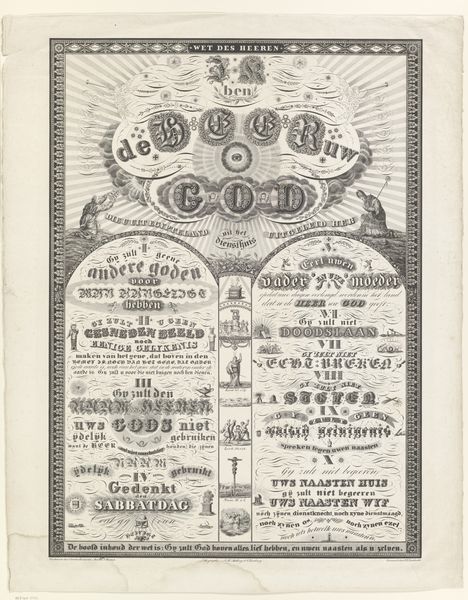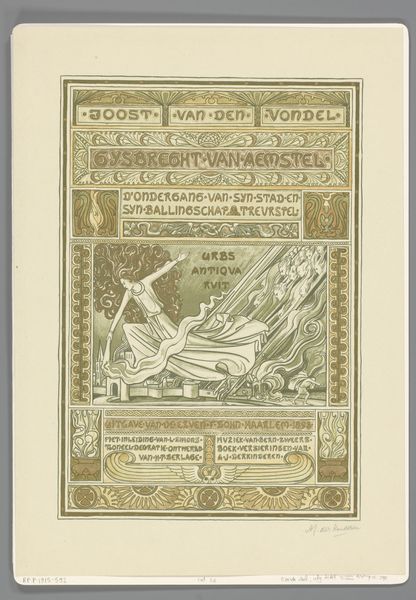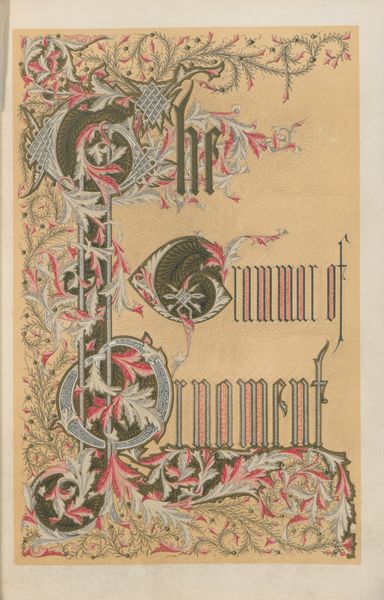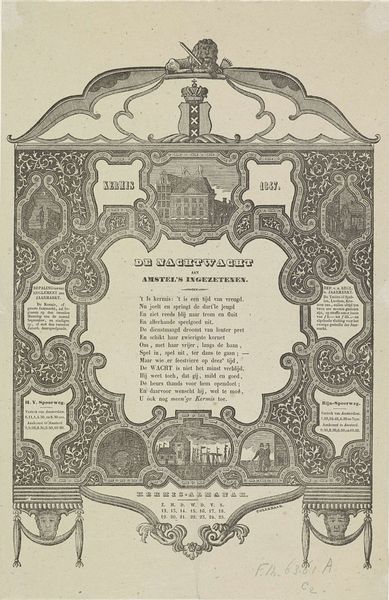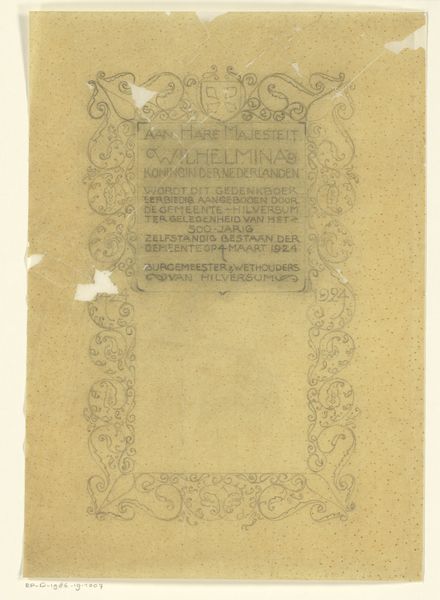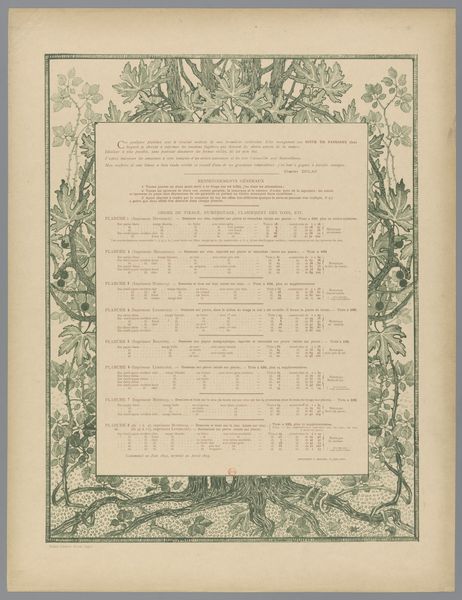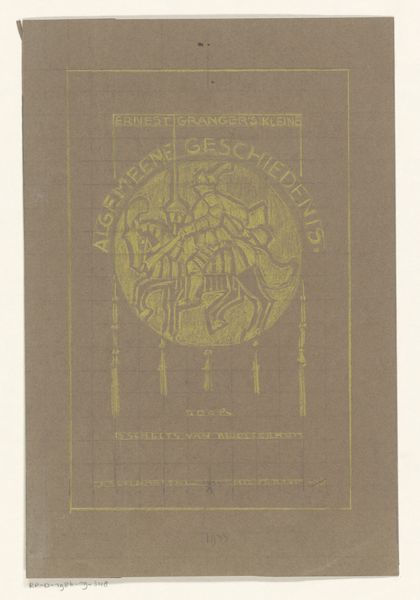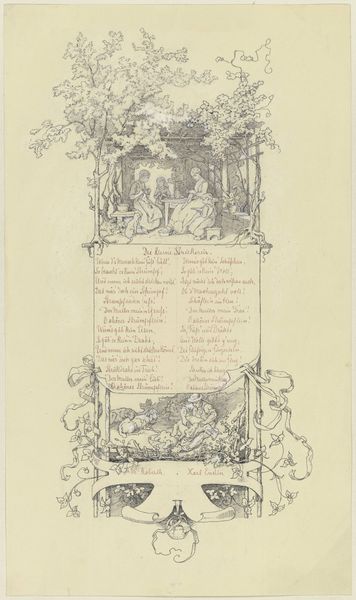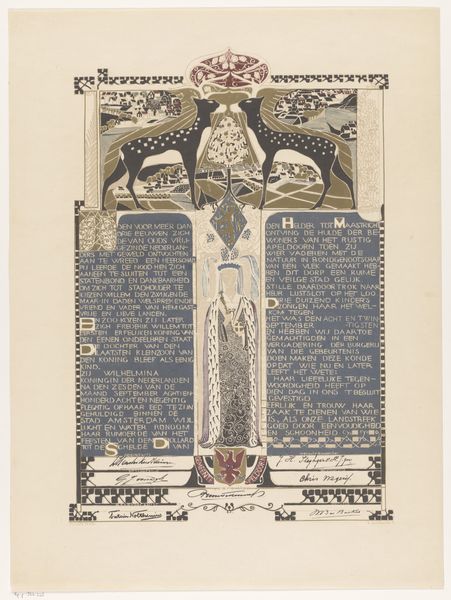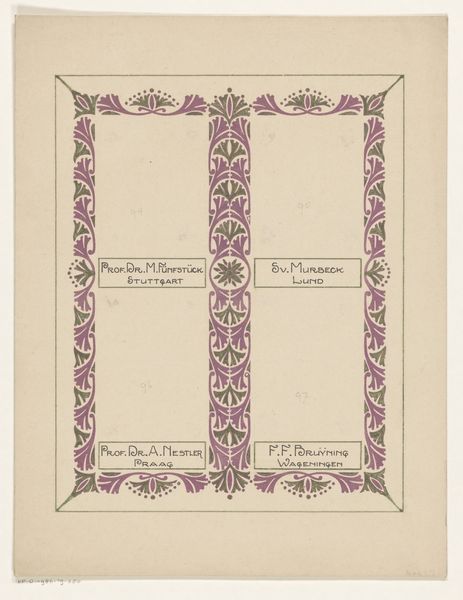
Oorkonde bij het aanbieden van een portret van Cornelis Marius Kan geschilderd door Pieter de Josselin de Jong before 1911
0:00
0:00
gustvandewallperne
Rijksmuseum
graphic-art, lithograph, print, typography
#
portrait
#
graphic-art
#
art-nouveau
#
lithograph
# print
#
woodcut effect
#
typography
#
linocut print
#
decorative-art
Dimensions: height 468 mm, width 350 mm
Copyright: Rijks Museum: Open Domain
Curator: This lithograph, dating from before 1911, commemorates the presentation of a portrait of Cornelis Marius Kan. The artist is Pieter de Josselin de Jong, and you can see it in the Rijksmuseum's collection. What strikes you about it at first glance? Editor: The visual language! It's elegant but also weighty, like an illuminated manuscript. The colours are muted but create a dreamlike scene with the earth at the bottom and the bells above. Curator: Indeed. Note how the typography itself is part of the design, an approach highly characteristic of Art Nouveau. The image needs to be read as well as seen. I wonder how it situates Dutch colonialism within a larger historical framework? The globe grounds the typography in a real-world context. Editor: The bells must represent academic accolades or an honorific occasion, though the multiple bells might imply excessiveness or celebration. Bells as celebratory objects certainly speak across different cultural contexts. Their form also resonates visually, with the curves of the Art Nouveau text framing the certificate. Curator: The text emphasizes the twenty-fifth anniversary of Kan as a professor of geography and ethnology, particularly of the Dutch East Indies, at the University of Amsterdam. These fields were obviously instruments in establishing knowledge around colonial expansion and authority. Editor: Yes, there's a complicated relationship between scholarly pursuit, political power, and cultural identity embedded within the imagery. It’s interesting how these decorative prints end up having all kinds of darker and more complex ideas, not necessarily intentional on the part of the artist, especially because the symbols shift across generations. Curator: Precisely, its very existence—a decorative object honoring a professor of colonial studies—speaks volumes about the era's values. The document embodies tensions between celebrating scholarship, colonial legacy, and indigenous oppression. Editor: Well, exploring that interplay has definitely given me a new appreciation for the work's cultural and historical implications. Thanks. Curator: And for me, a richer sense of the cultural symbolism imbedded in what seemed at first to be a work of formal academic appreciation.
Comments
No comments
Be the first to comment and join the conversation on the ultimate creative platform.
